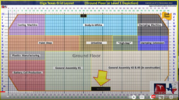China COVID info, from
https://www.cnn.com/2022/12/26/economy/china-covid-surge-economy-strain-intl-hnk/index.html.
Key excerpts below:
“Factories and companies are also forced to shut down or cut production because of more workers getting sick.”
“Auto manufacturers sold 946,000 vehicles from December 1 to December 18, down 15% from the same period last year, according to
most recent statistics from the China Passenger Car Association.”
“BYD, the country’s largest electric vehicle manufacturer, said it had to slash production by 2,000 to 3,000 vehicles per day as more workers are unable to work.”
“The Covid outbreak has severely impacted our production,” Lian Yubo, vice president of BYD, said Thursday at a forum in Shenzhen. “20% to 30% of our employees are sick at home.”
He added that the company’s monthly production is likely to fall short of target by 20,000 to 30,000 vehicles for December.”
“Many factories have been forced to shut down for weeks because of sick workers and lack of orders, according to Chinese media.”
Nothing Tesla-specific in the article, but:
-China COVID situation a mess right now.
-Lots of factories temporarily shutting down due to sick workers or problems with suppliers due to sick workers.
-Last week of BYD deliveries they may have been lucky. Likely to see impact for them this week.
Conclusion:
There is no Tesla-specific demand problem in China. Looks much more like a country-wide problem over the next few weeks not at all specific to Tesla.




